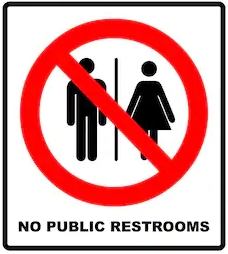STORE HOURS
MONDAYS - CLOSED
TUESDAY TO FRIDAY 10 - 6
WEEKENDS 10 - 5
* HOLIDAY MONDAYS 10 - 5
ALL SALES ARE FINAL
If you are uncertain in any way about any item to be purchased here, please do not make it.
 
|
Your Ontario Source for Permaloc Edging
'The World's Best Landscape Edging'
NEW! GeoEdge Green Roof Edging Now Available
Click here for more information.
|

|
|  |
 |
 |
Succeeding With Cedars
|
SUCCEEDING WITH CEDARS
Cedars are a useful and durable plant that can provide privacy, protection for birds, and in time can lessen wind to a patio or backyard. We recognize that there are many cedars sold in Waterloo Region, and we are but one source of them. Over the years, however, we continue to see patterns within the problems people experience with this plant, and the questions they ask. Here are just a few tidbits of information to know about this popular category of evergreen.
There are basically 3 categories of this plant.
Pyramidal cedars grow in a columnar form. Pyramidal forms can be used as hedging that doesn't require trimming, but the trade off is that you might have to plant more plants to provide privacy, closer together, in order to get it.
Hedging cedars tend to have fronds that are 'flattish' in appearance making them suitable for that purpose.
There are many other forms (globes, dwarf pyramids, threadleaf) of cedar as well.
|
|
Tapered wider at the base | Cedars can be trimmed up to twice a year - normally this is done in the late spring (June and early July) and if necessary, sometimes in the early fall. The second trimming timing is a bit tricky in that it is best done when any new growth produced by the trimming has adequate time to harden off for winter. If you do it just a little bit later, you run that risk of damage. Hedging cedar requires this pruning to produce side branching to 'fill out' and become thicker. For other forms, it can be done to gently improve the shape.
Where hedging types are concerned, an important consideration is to trim the forms wider at the bottom than at the top (to permit the most light to make it to the bottom of the plant). Cedars that are 'thinning' at the bottom are often that way because they have been pruned 'square' rather than 'trapezoid'. It's is general practice to take 1/2 to 1/3 of the new growth off when trimming.
|
The rate of growth of a cedar is dependent a bit on the category. Usually this tends to be of most importance when privacy is desired, and folks want it NOW! Hedging cedars in general grow fastest, but all of this growth is not 'kept', as the trimming required for density is not something that can be deferred until the desired height is reached, but is done every year. The average rate of growth for an established hedging cedar is roughly 12" a year (if not clipped), while for a pyramidal cedar it might be about 1/2 that much.
The best place to plant a cedar is where there is at least 6 hours or more of direct light.
Over time, cedars may adapt to lower light conditions, but they rarely do well in shadier locations.
There is an assumption that cedars do well in wet locations. This is not entirely true. Cedars are often found 'adjacent' to wet or swampy areas, but rarely do they do well where their shallow roots are subject to excessively wet conditions. Planting them in the swale or lowest part of the yard (where there water collected or moving) is not advisable.
When a cedar has little light, or too much water, the older growth becomes 'extraneous' to its needs and the cedar will shed them.
Scoring the root ball - 4 or 5 times |
Much has been written on the 'best' time to plant a cedar. The answer depends a little bit on how it comes to you. If it is a larger plant being 'dug' from the field, then these are generally best planted starting in the spring and through the summer. They can be planted in the fall, if necessary, but as the time from digging until winter is often short, there is a considerable risk of dessication injury through the winter if this is done later in the fall. It doesn't mean you can't do it - you just need to be aware of this risk and mitigate it.
If the plant is container grown, then the rooting of the plant is complete, and if they are properly watered (see next tab) they can be planted pretty much anytime you wish. One important tip with container grown cedars is to score the root ball to force new roots to emanate from the grooves that are made by doing so.
Where cedars fail most is in the watering applied to them post planting. While a dug cedar has a potentially higher chance of a digging issue that manifests itself as a dead plant, for one that has been container grown TRANSPLANT SHOCK CANNOT HAPPEN as it is already fully rooted. Source of origin (west vs. Ontario), 'mystery disease', and the weather are often blamed for failure, when improper watering critically in the months directly after planting is the primary cause. Here is a definitive list of things to know to ensure this is done properly.
- Ensure there is a dish of soil to retain and direct water at the base of each of the plants, and ensure that is maintained there for 12 months from date of planting. It's critical that the amount of water applied is known, is pooled directly above the root ball, and this is percolated down where the plant sits so that the root ball is moistened 'from top to bottom' completely when watered. Takes 30 seconds to make and not doing so is by far the single largest mistake made in planting them.
- Throw away any drip system, sprinkler or other time saving device you might want to use, as reliance that IT is doing what is right versus YOU doing it right is an avoidable problem. AFTER it is rooted these devices are of benefit.. not DURING the process of rooting. If the depth of moisture from a device does not percolate deep enough, the roots will 'follow the water' and will be found only near the surface. During droughty periods you will assume all is fine in the watering being done by these devices, and by the time you realize it's not IT WILL BE TOO LATE. Other potential problems with this is that if the roots are only at the surface they can also suffer cold injury in the winter. Once a cedar has matured, it can find water for itself with the roots that have been developed - but if you assume that you are off the hook for this watering requirement within a few weeks of planting (regardless of when it is done), the simple answer is that you are not, for it can take several months for this to take place.
- It's difficult to say with absolute certainty the frequency and volume of water you will require - as every season, and every soil type, and every wind strength, will play a role in how much water the cedar will use. In general, however, if a cedar is watered deeply when done, it should manage to hold for two or three days from the day when the water has been applied.
- In the fall cedars prepare for winter by bringing up moisture to the fronds. This process starts in early to mid-September and continues until the ground freezes. EVEN AFTER ESTABLISHMENT ensuring that cedars get deep watering in the fall year will go a long way in preventing drying out injury into the future.
To wrap.. or not to wrap? That is the question.
IF your cedars are spring or summer planted, have been watered deeply, and are not in a highly exposed location - you likely will not have to do this.
If they are anything else (fall planted, haphazardly watered, exposed) then for the first winter after planting this might be considered to be done.
This is done with 5 oz. burlap in early November generally, with the burlap removed BEFORE a warm spell in spring takes place (usually early April - but every year is different).
If you don't want to wrap, it is also possible to apply an anti-dessicant spray like Wilt-Pruf to your cedars in fall (mid to late October) to slow moisture loss through the winter months.
Finally, there are sometimes comments made re: source of origin of the cedar as playing a role in their success. What you have to remember is that each and every cedar of the same variety is genetically the same, as none are propagated from seed. So an Emerald Cedar that you buy today has in its lineage the original Smaragd cedar (part of it's Latin name) that arose in D.T. Poulsen's (the breeder) field in Denmark in 1950.
Does where it grow make a difference then? In some areas of North America, this cedar will put on more growth, and experience less potential winter injury, then in others - and for a grower of cedars it makes no sense not to grow a plant that can be grown optimally. But they still experience winter, and they still experience frost. Regrettably, the larger issue with cedars from 'far away' sometimes stems from larger than average cedars being harvested with smaller than average root balls (to save on weight and freight in their transport here). If grown with complete root systems, and cared for properly, there is no need to 'run' from cedars no matter where they are sourced.
|
|
|
|


















